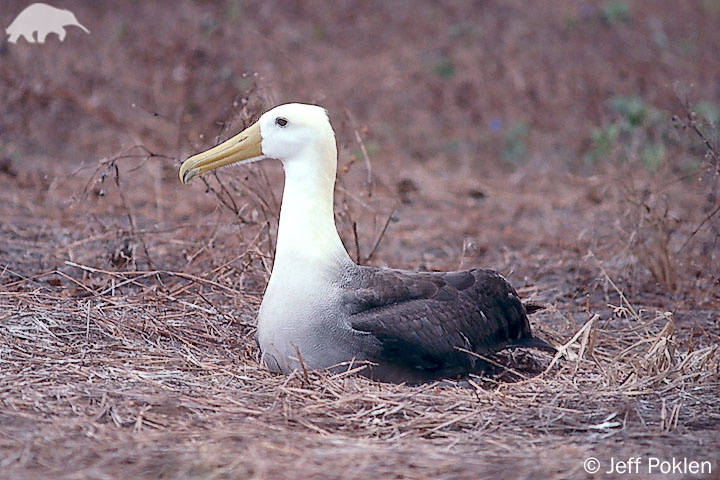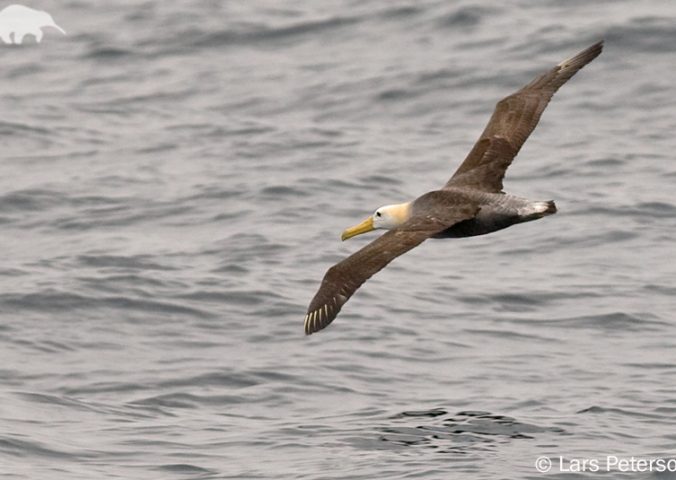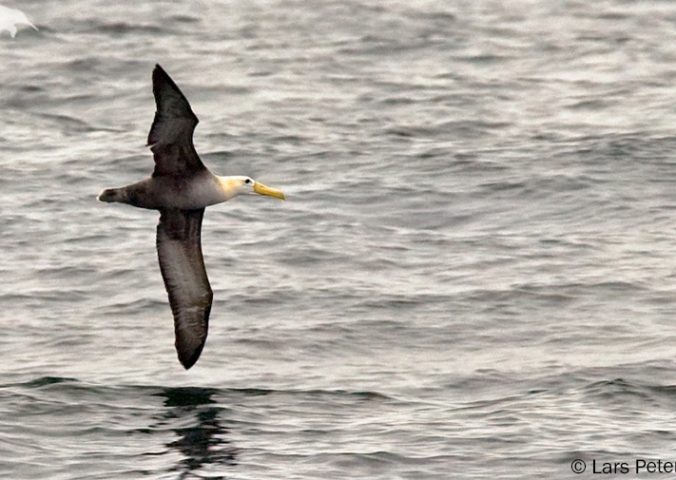About
This large and beautiful bird has a huge wing-span of nearly 2.4 metres!
It spends most of its time soaring over the nutrient-rich waters off the coast of Peru foraging for fish, squid and crustaceans. They are the only member of Diomedidae located in the tropics. Both males and females take part in chick-rearing, at breeding grounds on the island of Española in the Galápagos archipelago. The last accurate assessment of Waved Albatross numbers was in 2001. Their pelagic movements and the difficult terrain in which they nest make surveying difficult and there is currently no reliable population estimate. Despite protection at breeding grounds, there is evidence that the species is in decline. The increasing use of long-line fishing techniques has been a significant cause of mortality, and the majority of individuals accidentally caught on these lines are males. This creates a female-biased population, which is not as reproductively successful as a gender-balanced population due to the need for the parental investment of both sexes to successfully rear their chick.
- Order: Procellariiformes
- Family: Diomedeidae
- Population: Unknown
- Trend: decreasing
- Size: 86-90cm
- Weight: 3.4kg
EDGE Score
Distribution
This species forage in the nutrient-rich coastal waters off north and central Peru. They fly almost 100km from their nesting sites in the Galápagos Islands to find food for their chicks.
Habitat and Ecology
Whilst spending most of its time foraging on the open sea, the Waved Albatross returns inland to breed. Pairs choose nesting sites in rocky areas formed by lava, or cliff tops with sparse vegetation or sites with thick brush, as long as open landing and take-off areas are available to them. They are long lived, with a lifespan of 40-45 years. Males and females take part in an elaborate courtship ritual that involves bowing, bill circling and clacking. Pairs are monogamous, mating for life unless one dies, and both sexes care for the chick.


